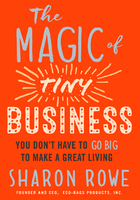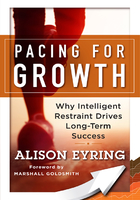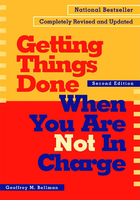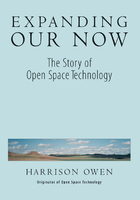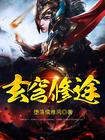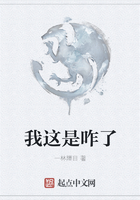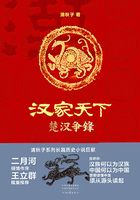I have always thought of this book as a collection of intriguing maps, much like those used by the early explorers when they voyaged in search of new lands. Their early maps and commentaries were descriptive but vague, enticing but not fully revealing. They pointed in certain directions, illuminated landmarks, warned of dangers, yet their elusive references and blank spaces served to encourage others to explore and discover. They contained colorful embellishments of places that had struck the discoverer's imagination, yet ignored other important places or contained significant errors. Many early maps contain warnings: “Here there be dragons,” or “Regions very imperfectly known.” But these maps contained enough knowledge to inspire those who were willing, to dare similar voyages of their own.
The territory that I began mapping when this book was first published in 1992 has now revealed many more of its features. It is the world we live in daily, a world of uncertainty, sudden shifts, and webs of relationships extending around the world. In 1990, as I began to apply the new sciences to the challenges of leadership, I noted that “we live in a time of chaos, as rich in the potential for disaster as for new possibilities.” What's ironic is that I now look back to 1990 as the good old days, when we had time and space to reflect on ideas, when we had the luxury to think about a new worldview and consider whether we believed it or not. The tone of this book reflects that more spacious era. It is a gentle invitation to become curious, to discover your own questions, to see if your experiences confirm or disconfirm new science, and to engage with me and many others as explorers of this new world only beginning to become visible.
But now my voice of invitation needs to be prefaced by a clear, more insistent voice. Now I am the town crier sounding the alarm. The world has changed. The worldview of the sciences described here is no longer hidden in books. It blares from news reports and blazes across our screens in the terrifying images of these times—wars, terrorism, migrations of displaced people, hurricanes, earthquakes, tsunamis. Chaos and global interconnectedness are part of our daily lives. We try hard to respond to these challenges and threats through our governments, organizations and as individuals, but our actions fail us. No matter what we do, stability and lasting solutions elude us. It's time to realize that we will never cope with this new world using our old maps. It is our fundamental way of interpreting the world—our worldview—that must change. Only such a shift can give us the capacity to understand what's going on, and to respond wisely
I've been out in the world for many years describing the new worldview that science offers us. In my travels, I've met hundreds of thousands of people who have shifted their view and are creating organizations that are adaptive, creative and resilient. Yet many others are more cautious and doubtful. Some people can't be convinced that anything has really changed—the old ways still work fine for them. Others believe that organizations can only function well, especially in times of chaos, by using command and control leadership and hierarchical structures. And many want evidence that these strange new concepts apply ‘to the real world.’
Here is the real world as I experience it. It is a world where small groups of enraged people alter the politics of the most powerful nations on earth. It is a world where very slight changes in the temperature of oceans cause violent weather that brings great hardship to people living far from those oceans. It is a world where pandemics kill tens of millions and viruses leap carelessly across national boundaries. It is a world of increased fragmentation where people retreat into positions and identities. It is a world where we have very different interpretations of what's going on, even though we look at the same information. It is a world of constant surprise, where we never know what we'll hear when we turn on the news. It is a world where change is just the way it is.
This dramatic and turbulent world makes a mockery of our plans and predictions. It keeps us on edge, anxious and sleepless. Nothing makes sense anymore. Meaning eludes us. Some offer explanations that this is the end of times or the age of destruction.
Whatever your personal beliefs and experiences, I invite you to consider that we need a new worldview to navigate this chaotic time. We cannot hope to make sense using our old maps. It won't help to dust them off or reprint them in bold colors. The more we rely on them, the more disoriented we become. They cause us to focus on the wrong things and blind us to what's significant. Using them, we will journey only to greater chaos.
Now that I've spent years applying the lens of new science to organizations, communities, governments, nation states, and to myself and family, I can report on the gifts available with a new paradigm. I have discovered insights and explanations about why things are unfolding as they are. I have been inspired to experiment with new ideas and solutions. I feel I am learning how to move more effectively and gracefully through this time.
But I have also discovered how hard it is to surrender a worldview. When scientists confronted this challenge at the beginning of the 20th century, they couldn't accept the world revealed to them in their experiments. They described this new world as strange, puzzling, troubling, bizarre, absurd.
When our worldview doesn't work any longer and we feel ourselves sinking into confusion, of course we feel frightened. Suddenly, there is no ground to stand on. Solutions that worked no longer do. The world appears incomprehensible, chaotic, lacking rationality. We respond to this incoherence by applying old solutions more frantically. We become more rigid about our beliefs. We rely on habit rather than creating new responses. We end up feeling frustrated, exhausted and powerless in the face of so much failure. These frustrations and fears create more aggression. We try to make things work by using brute force rather than intelligence and collaboration.
It was only when scientists were willing to accept their confusion instead of fleeing from it and only when they changed the questions they were asking, only then could they discover the insights and formulations that gave them great new capacity. Once this new worldview came into focus, scientists reengaged with their work with new energy. Wonder, curiosity, and the delight of discovery replaced their fatigue and frustration. I am hopeful that we too can regain our energy and delight by looking at the world of organizations through their worldview. I believe their maps are reliable guides to lands of promise, where human creativity, wisdom and courage can be fully engaged in creating healthy and enduring organizations and societies.
You will find maps of many varieties in this book. Some describe specific new science findings in enough detail that, hopefully, you understand their terrain. Others point out less explored places that need further inquiry. Still others are very detailed, drawing deliberate connections between science and organizational life. And finally, there are records of my personal journey, what I felt and experienced as I brought back questions and insights and applied them in my own work.
Like anyone, my own training and world view bias me. I have focused on the scientific discoveries that intrigued my organizational mind and have ignored many others. This is neither a comprehensive nor a technical guide to new science. It recounts, instead, the voyages I took to but a few of the emerging areas in science, those that enticed me. I was intrigued by three different areas of science: quantum physics, self-organizing systems, and chaos theory. Because I develop the science as I go and relate these three to one another, things will make more sense if you read the chapters in order.
The Introduction and Chapter One introduce all three sciences and the contributions they make to our understanding of the way the world works. These first chapters also provide some initial explanations of sources of order in the universe and speculations on the fears and conditioning that prevent us from appreciating the way that order is created in living systems.
Chapters Two, Three, and Four explore the implications of quantum physics for organizational practices that have, until now, been derived from the seventeenth-century world view of the physics of Isaac Newton. Quantum physics challenges our thinking about observation and perception, participation and relationships, and the influences and connections that work across large and complex systems.
The next chapters, Five and Six, focus on living systems and some new concepts emerging from biology and chemistry. These chapters introduce new ways of understanding disequilibrium and change, and the role disorder plays in creating new possibilities for growth. Information, in our self-organizing universe, is the primary resource necessary to bring things into form. New interpretations are required for there to be new forms or new life. Self-organizing systems demonstrate the ability of all life to organize into systems of relationships that increase capacity. These living systems also demonstrate a different relationship between autonomy and control, showing how a large system maintains itself and grows stronger only as it encourages great amounts of individual freedom.
Chaos theory is the subject of Chapter Seven. Chaos is a necessary process for the creation of new order. This is a world where chaos and order exist as partners, where stasis is never guaranteed nor even desired. I describe several lessons learned form the relationship between these two great forces and how we might think about the workings of chaos in our lives and organizations. I also explore lessons to be learned from fractals—how nature creates its diverse and intricate patterns by the presence of a few basic principles combined with large amounts of individual freedom. And I offer my own observations for how our human need for meaning serves to bring order out of chaos.
Chapter Eight explores life's extraordinary capacity to change, to adapt and grow as required. I explain what I believe to be the underlying processes in living systems that give them this capacity. We have spent several decades attempting to change organizations, communities, nations and each other. We have not been successful in these attempts, or they have resulted in troubling unintended consequences. With so many failures, it seems clear that we need to rethink our basic assumptions about how change happens—for this, life is the best teacher.
In Chapter Nine, I draw together various principles from the sciences to highlight those that can contribute to a “new science” of leadership. This new worldview, with its emerging maps and insights, can teach us how to make sense of this world. Much discovery still awaits us, and I hope many more of you will join in.
And in case you need any more convincing that we need a new worldview to navigate these chaotic times, I have written a new chapter that applies these ideas to “the real world.” Chapter Ten uses the lens of new science to bring into focus two of our most critical needs: our ability to respond to disasters and our ability to stop terrorism. For me, the lens of new science illuminates these two challenges brilliantly. It allows us to see things that are invisible with the old lens, the deeper dynamics at play in disaster relief efforts and terrorist networks. Once these dynamics become visible, we have the means to respond far more intelligently to these critical dilemmas. This is the promise of a new paradigm—unsolvable problems suddenly become solvable. We must make use of this promise before the world disintegrates into even more chaos.
The Epilogue closes the book on a more personal and philosophical note. I describe my own discoveries about the nature of this journey and the process of discovery. And I encourage us to understand that we can't make this journey alone—we need good companions, patience, endurance, and courage. After many years and difficult passages, I feel grounded in this new land, nourished by its ideas, and hopeful about its promises. I hope you too will venture forth to make your own discoveries, which you will then offer generously to the rest of us.

